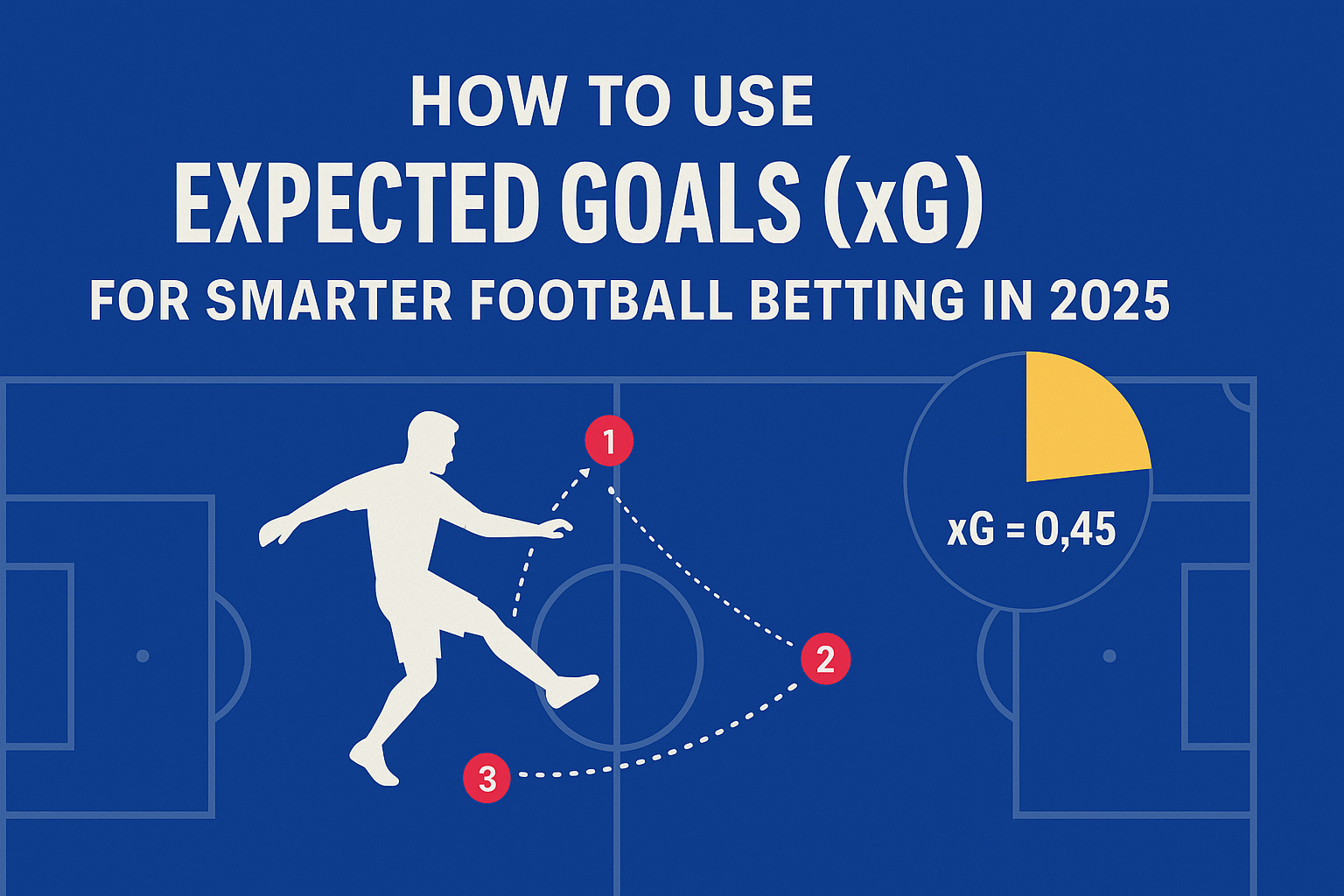Commercial Information
If you sign up for an account through one of the links on this page we may receive a commission from them for this. This does not effect our rankings and there are some sites we do not receive a commission from. All our reviews are independently written. you can read our full affiliate policy below.
18+ | commercial content | begambleaware.org
Note: 18+ Only, terms and conditions apply to all offers, subject to withdrawal at any time. For help and advice on responsible gambling please see begambleaware.org.
Expected Goals (xG) is no longer just a buzzword among football fans and commentators—it’s one of the most powerful tools available for data-driven sports betting.
In this guide, you’ll learn:
-
What xG actually is and how it’s calculated
-
Real-world examples of xG usage in betting
-
Limitations of xG (and how to avoid common traps)
-
How to apply xG in specific betting markets and what markets it is useful for.
What is Expected Goals (xG)?
Expected Goals (xG) is a stat that quantifies the chance of scoring from a shot based on several data points. It assigns a probability (from 0 to 1) that a shot will result in a goal (1 being an almost unmissable chance and 0 being practically a goal kick).
What influences xG calculations?
-
Distance from goal
-
Angle of the shot
-
Type of assist (cross, through ball, rebound, etc.)
-
Body part used (head, foot, etc.)
-
Position of defenders and the goalkeeper
For example, a close-range tap-in with an open goal might have an xG of 0.9, while a long-range strike from outside the box might be just 0.05.
🔗 Professional analytics companies like Opta or StatsPerform typically provide data.
How are expected goals calculated?
It’s not just Opta that offers xG stats; other companies offer similar stats using other data points. We have compared a couple of them, and they are all usually very close to each other.
xG Model Components Include:
-
Shot location (x and y coordinates)
-
Type of build-up (set piece, open play, fast break)
-
Pressure applied by defenders
-
Historical conversion rates from similar positions
For example, Opta’s model has data from over 300,000 shots and is regularly updated.
Other expected data points in football
As well as the expected goals stats, you can also find other data points using a similar metric. These are easier to find for the top leagues around the world.
-
xA (Expected Assists): Measures the chance quality created by the passer
-
xGOT (Expected Goals on Target): Considers where the shot lands on the goal
-
xG/90: Player’s xG output normalised per 90 minutes. This is a good one to get a true comparison of players’ performance.
-
xGA: Expected goals against (used in defensive evaluations)
These help uncover finishing ability, shot efficiency, and team-wide patterns.
How xG Can Improve Your Betting
Let’s say you’re eyeing a Premier League match between Newcastle and West Ham.
| Metric | Newcastle | West Ham |
|---|---|---|
| Goals (Last 5 Games) | 5 | 9 |
| xG (Last 5 Games) | 9.2 | 4.7 |
| xG Conceded (xGA) | 4.1 | 7.9 |
Here’s what this tells us:
-
Newcastle is underperforming in terms of xG — they’re creating high-quality chances but not converting them.
-
West Ham is overperforming in terms of xG — their finishing is outperforming the chances they create.
This insight suggests a value bet on Newcastle to win or to score 2+ goals, especially if public sentiment favours West Ham based on recent goals alone.
Betting Markets Where xG Matters
| Market | xG Insight Example |
|---|---|
| Over/Under Goals | Use xG trends to spot unsustainable goal streaks |
| Correct Score | Pair xG with xGA to project likely scorelines |
| Player Goalscorer | xG/90 helps reveal value picks flying under the radar |
| Both Teams to Score | Compare xG and xGA across home/away splits |
Tip: Look for teams consistently “beating xG” — it often reverts to the average over time.
What Are the Limitations of xG?
While xG is incredibly powerful, it’s not infallible.
Common pitfalls to avoid:
-
Ignoring variance: Small samples can produce skewed results. Ensure there is enough data to get a precise result.
-
Not adjusting for opposition: xG models don’t factor in opponent strength. Look over the last few matches to see who they have played and compare that to the strength of the team they are playing.
-
Treating all models equally: xG is not standardised; models vary in accuracy. Our advice is to choose your preferred model and stick to it – do not go looking for other models just because they back up your bets.
-
Assuming finishing ability doesn’t exist: Some players consistently outperform xG. In addition to team data, it is also worth examining individual player data, particularly for forward players and likely goal scorers.
Who Uses Expected Goals—and Why You Should Too
Premier League clubs like Liverpool and Brentford build entire recruitment strategies around xG. Broadcasters such as Sky Sports and The Athletic frequently reference xG in their match coverage.
“Expected goals reveal how teams are performing beyond the scoreline. It’s a crucial betting edge.” – Mark Taylor, StatsBomb Analyst
Trust, Sources, and Methodology
All data cited in this article is from Opta Sports, StatsBomb, and publicly available models on FBref and Understat. This article was written by Simon Grainger, a seasoned sports betting analyst with over 7 years of experience in statistical modelling and value betting. Simon is highly knowledgeable in the world of betting data and has previously built the data for the On The Ball betting stats app.
Disclosure: This article contains affiliate links. We may earn commission if you register for a betting account through our links—at no extra cost to you.
Summary
Expected Goals (xG) can give you a decisive edge—if you know how to use it. From spotting trends to evaluating undervalued scorers, xG helps turn data into smart, easy-to-use information.
📥 Bookmark this guide, and don’t forget to check back for updates as new models and tools become available.
Expected goals is an interesting stat to help to try and predict football matches. It can show you teams and players who are underperforming and this can give you an edge. It is a complex system so it is advisable to take some time to understand it and how the trends occur.
Author - Simon Taylor









